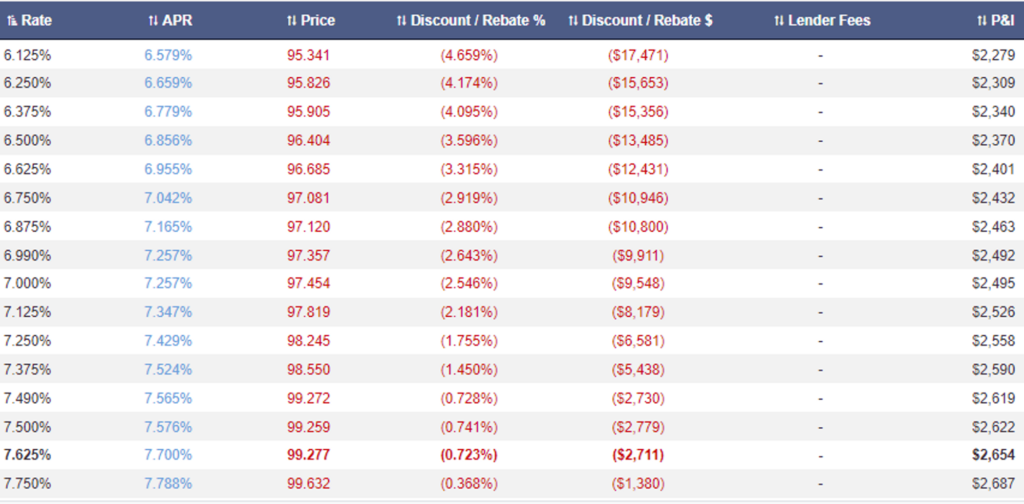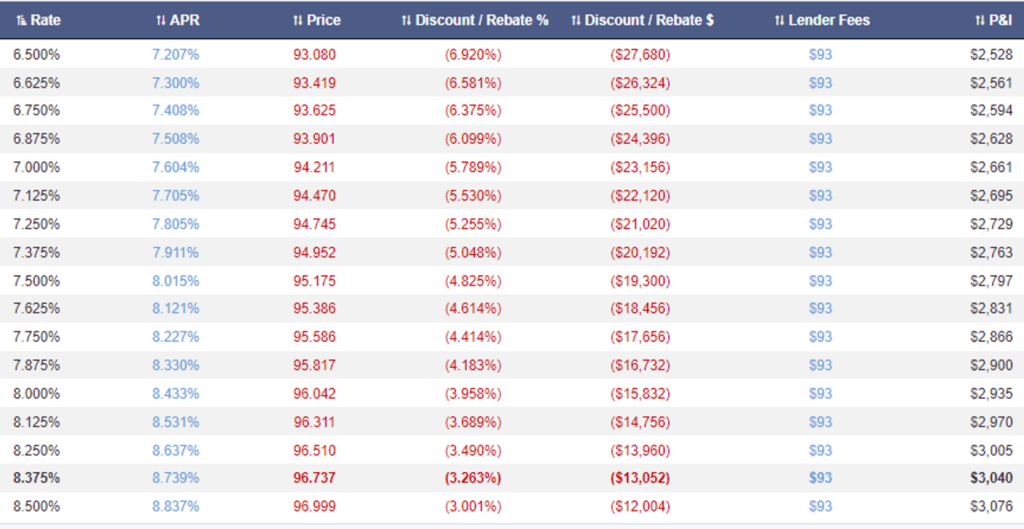
While I often discuss the merits of buying primary residences and transitioning them into rentals through the nomading method, this approach isn't feasible for everyone. Today, let’s delve deeper into the dedicated investor's realm and understand the nuances of buying properties purely for investment.
Key Considerations When Buying Investment Properties
Higher Initial Investment: Unlike primary homes, investment properties typically require heftier down payments. While most banks stipulate a minimum of 20%, savvy investors often recommend a 25% down payment. Here's why:
Rate Comparison Between 20% vs. 25% Down:
20% down example

25% down example

These snapshots underscore the significant difference in rates. And when comparing to a primary residence, the disparity becomes even more pronounced:
Navigating Conventional Restrictions: Investing means juggling multiple mortgages. The challenge? Qualifying for each one. Here are some strategies to ease the process:
Leverage Existing Leases: Have a signed lease or purchase a property with existing tenants. Lenders typically consider 75% of the lease amount to counterbalance the mortgage payment, simplifying qualification.
Utilize 1007 Rental Appraisals: This appraisal doesn't evaluate property value. Instead, it gauges potential rent. Appraisers use local comps to project rental income, and lenders usually consider 75% of that value for qualification, assuming you'll rent the property out.
These techniques can substantially ease the purchase process, even if you don't boast an exceptionally high income.
A Unique Lending Approach: DSCR loans might sound too good to be true, given they can technically approve without income verification!
How They Work: While they might charge heftier fees and offer higher rates than conventional loans, their qualification relies on your credit score and the DSCR ratio. This ratio evaluates the entire mortgage payment (PPITI) against potential property rent. Some banks work with a 1:1 ratio, while others might consider a .7:1. However, targeting at least a 1.15:1 ratio will likely streamline your approval process.
Investing in properties without moving into them requires understanding these nuances and working within more conventional financing parameters. Stay tuned for our upcoming video, where we'll dive into some creative financing options for investment properties!
